Ever tried teaching your bird a trick, only to be met with blank stares or a dramatic flutter? Trust me, I’ve been there. Bird training is less like sprinting and more like a slow dance, you’ll need patience, rhythm, and a lot of millet treats.
In this guide, we’ll break down the timeline of training a bird, what impacts progress, and how to fast-track that trust. Whether you’ve just adopted a talkative parrot or a timid cockatiel, you’ll walk away with realistic expectations and solid tips.
Factors That Affect Bird Training Time
If there’s one thing I wish someone had told me before I started training birds, it’s this: no two birds are alike. Early on, I tried to teach my first parakeet, Luna, to step up. Took me three weeks. Then I got Kiwi, a cockatiel, and he nailed it in two days. I was shocked! Turns out, there are quite a few things that influence how quickly a bird learns.
Age and Species of Your Bird
Younger birds tend to be more open to training. They’re like little sponges, soaking up everything! But older birds? Sometimes they come with habits or fears that slow things down. And let’s not forget that species matter too. Parrots are known for their intelligence, but even within parrots, a macaw might need a different approach than a conure. One time I worked with a Senegal parrot who was incredibly clever but super stubborn, smart doesn’t always mean easy!
Personality and Previous Experiences
Some birds are naturally outgoing and curious. Others… not so much. If your bird was mistreated or neglected before, they might flinch at your hand or freeze during training. That’s not your fault, and it doesn’t mean they’re untrainable. My friend adopted a rescue lovebird, Mango, who’d spent years in a tiny cage. It took her six months just to perch near him comfortably. But now? Mango flies to her shoulder every morning.
Environment and Distractions
Your bird’s environment plays a huge role. Loud noises, other pets, clutter, or even just the TV can mess with your progress. What made a huge difference for me was turning off my phone and sitting in the same quiet room every day. If your bird is constantly distracted or anxious, they won’t be able to focus on training.
Frequency and Consistency of Training
Early in my bird training journey, I thought more was better, train all day, right? Nope. Birds thrive on short, frequent sessions. Ten minutes, twice a day, with the same tone and gestures, works wonders. Skipping days or switching up cues only confuses them. It’s like trying to learn a new language with a different teacher every week.
Trust Level and Bonding
This one’s big. You can’t rush trust. If your bird doesn’t feel safe with you, training won’t stick. With Luna, I learned that bribing with treats only went so far. The real breakthrough came when I just sat quietly near her cage for days, doing nothing. That calm presence built trust, and then the learning really started.
So if your bird isn’t “getting it” right away, don’t worry. Think of training not as a checklist but as a journey together. Every step, even the tiny ones, means you’re building something beautiful.
Typical Timelines for Basic Commands
One of the most common questions I hear is, “How long will it take my bird to learn this?” And I totally get it, when I first started with Luna, my parakeet, I imagined she’d be doing spins and saying “hello” in a week. Reality check? It takes time, but once it clicks, it’s magic. Let’s break down what to expect with some common bird training milestones.
Teaching “Step Up”: 1–2 Weeks
This is usually the first command trainers recommend. And it makes sense, it’s all about trust. The moment your bird willingly steps onto your finger or perch is such a proud one!
- You’ll need: Patience, calm movements, and a steady voice
- Pro tip: Use a consistent cue like “Step up” every single time, and pair it with a gentle nudge on the belly
- Timeline: Some birds might nail it in a couple of days; others need a week or two of gentle repetition
Teaching Name Recognition: 2–4 Weeks
Yes, birds can learn their names! It’s especially handy for recall training or when you want to get their attention without yelling like a lunatic (guilty).
- Say their name in a cheerful voice when offering treats or pets
- Avoid using their name when scolding, keep it positive!
- Repetition is key. Luna learned hers in about 3 weeks with daily practice
Simple Tricks Like “Turn Around”: 3–6 Weeks
This one was so much fun to teach. It’s a little dance that’s cute and shows off your training progress.
- Use a treat to “lure” your bird in a slow circle on a flat perch
- Add the cue “turn around” once they start getting the motion
- Be patient, some birds might freeze or hop off. Just laugh and try again later!
Talking and Mimicking (for Parrots): 2–6 Months+
This one really varies depending on the species, and the bird’s mood! Parrots are famous for their mimicking, but don’t expect a full vocabulary overnight.
- Repeat phrases clearly, often, and with emotion. Birds love enthusiasm
- My friend’s African Grey started mimicking the microwave beep before she ever said “hello”
- Celebrate any sound, once they start imitating, words can follow
Training isn’t just about hitting goals, it’s about bonding and learning to “speak” each other’s language. If progress feels slow, don’t stress. Every session is a step toward connection, even if it doesn’t look perfect. Keep it fun, and your bird will love learning as much as you love teaching.
Building Trust Before Training Starts
Before I ever taught a bird to “step up,” I had to learn the hardest lesson of all: patience. In my early days, I would dive right into training with high hopes and a fistful of millet. But every time I rushed, my birds would back away, or worse, fly off in a panic. That’s when I realized trust isn’t built with treats. It’s built with time.
Why Rushing Can Slow You Down
Trying to push a bird too fast can backfire. I’ve made that mistake more times than I’d like to admit. Once, I tried to train Kiwi, my cockatiel, the day after bringing him home. He shrieked and clung to the side of his cage like I was a monster. It set us back weeks.
- Training without trust leads to fear, not learning
- Birds remember negative experiences. One bad session can undo a lot of progress
- Slow starts make for quicker breakthroughs later
Letting the Bird Come to You
This changed everything for me. I stopped reaching into cages and started sitting nearby, reading aloud or humming softly. I let them watch, decide, and explore at their own pace.
- Place your hand inside the cage only when necessary at first
- Sit beside their cage and talk gently
- Offer treats from your hand, but don’t force interaction
It’s amazing how fast a bird will approach you once they realize you won’t chase them.
Daily Routines That Encourage Bonding
Birds thrive on predictability. When they know what to expect, they relax, and trust grows naturally.
- Feed at the same times each day
- Greet them in the morning and say goodnight in the evening
- Spend a few quiet minutes near the cage every day, just observing or chatting
With Luna, I developed a habit of whispering the same silly phrase, “Hey sweet feathery bean”, every morning. Within two weeks, she’d chirp when she heard it.
Recognizing Fear vs. Curiosity
It’s easy to mistake one for the other, especially when you’re new. Curiosity looks like:
- Head tilting
- Slow, cautious steps forward
- Quiet chirps or purring
Fear, on the other hand, can show up as:
- Flattened feathers
- Sudden flapping or retreat
- Wide eyes and silence
Learning to read these signs helped me back off when needed, and lean in when the moment was right.
Building trust isn’t glamorous. You won’t always have fun stories to share at first. But one day, your bird will step toward you without hesitation, and that tiny moment will make every quiet hour worth it.
Daily Training Routine Ideas
When I first started training birds, I thought I needed to carve out huge chunks of time, like an hour-long “class.” Spoiler alert: birds don’t do lectures. They do bursts. Little, joyful, snack-filled bursts. Crafting a daily training routine is more about consistency and connection than it is about duration. Here’s what I’ve learned through trial, error, and a lot of sunflower seeds.
Best Time of Day to Train
Birds are creatures of rhythm. Once you learn your bird’s natural energy patterns, you’ll find the sweet spot for training.
- Morning: Most birds are alert and curious after waking up. This is my personal favorite training window
- Early Afternoon: Can work well if your bird is calm and you’ve had bonding time first
- Avoid late evening: Birds get sleepy and cranky, just like us!
With Luna, if I waited too late in the day, she’d stare at me like, “Ma’am, training time is OVER.”
How Long Each Session Should Be
Short and sweet wins the game here.
- 5 to 10 minutes is ideal
- Watch your bird’s cues: yawning, disinterest, or sudden flapping = wrap it up
- One or two sessions a day works best for beginners
When I kept things short, Kiwi started looking forward to training instead of dreading it. That was a game-changer.
Incorporating Play and Rest
Don’t forget, it’s supposed to be fun! Training shouldn’t feel like work (for you or your bird).
- Mix in their favorite games between commands, like peek-a-boo or toy tossing
- Always end with something they love (a cuddle, a treat, a toy)
- Let them nap or chill in their cage afterward. Rest helps cement what they just learned
Think of it like recess after a lesson, it reinforces the idea that learning leads to good stuff.
Using Short, Rewarding Intervals
Birds have tiny attention spans. Tiny. So keep the praise and rewards coming fast.
- Use a clicker or a specific “yes!” tone to mark correct behavior instantly
- Follow with a treat or affection right after
- Aim for 2–3 successful reps per minute, then break for a few seconds
It’s like training in little waves: action, reward, reset. Repeat.
Your daily training routine should feel like a little dance, a rhythm of learning, bonding, and play. Don’t stress the clock. Focus on the joy of those small wins, and before long, your bird will surprise you with just how much they’ve picked up.
Tips to Speed Up the Training Process
There was a point where I almost gave up. I was doing everything, or so I thought, but Luna still wouldn’t step onto my finger. That’s when I realized: training isn’t about doing more, it’s about doing the right things. These tips helped me turn frustrating sessions into fun breakthroughs. Let’s make your bird training journey smoother and faster, without stressing anyone out.
Use Favorite Treats as Motivators
You know how some people will do just about anything for chocolate? Birds are the same with their favorite snack.
- Find the exact treat your bird goes wild for, millet sprays, sunflower seeds, dried mango, you name it
- Use that treat only for training. It keeps it extra special
- Offer it immediately after the desired behavior so they associate it with success
With Kiwi, once I figured out he’d sell his soul for a tiny bit of apple skin, everything changed.
Keep Sessions Short and Upbeat
Long sessions can bore or overwhelm your bird, and honestly, they’ll bore you too. Keep the energy light and enthusiastic.
- Stick to 5–10 minute bursts, max
- Keep your voice cheerful, like you’re celebrating even the tiniest progress
- If your bird looks tired or distracted, call it early. It’s not a failure, it’s respecting their rhythm
Sometimes, ending early made Luna more eager the next time. Like she was thinking, “Wait, that’s it?! I want more!”
Always End on a Positive Note
This is huge. No matter how the session goes, always wrap up with something happy.
- Even if nothing went right, find a small win to reward
- Offer a treat, a gentle praise, or just some cuddle time
- This teaches your bird that training equals joy, not stress
Ending on a good vibe creates anticipation for the next session. And trust me, that’s a feeling you both want.
Be Consistent with Cues and Timing
Inconsistency is the silent killer of progress. If one day “step up” means your finger, and the next it means a perch, your bird’s gonna be like… huh?
- Use the same word, tone, and gesture every time
- Don’t switch up the reward delay, birds need that instant feedback
- Keep a journal if needed (I did!) to track what you said and how your bird responded
Being consistent might feel repetitive to you, but to your bird, it’s clarity. And clarity builds confidence.
Speeding up training isn’t about shortcuts. It’s about creating a vibe where your bird feels safe, happy, and understood. When training becomes play, progress happens almost by accident. That’s the magic.
When to Expect Setbacks
Let’s be real: bird training isn’t a straight line. It’s more like a wobbly spiral. Just when you think your bird has mastered a trick or built real trust… boom. They stop stepping up. They ignore the clicker. They scream when you enter the room. I’ve been there, and so have most bird parents. Setbacks are a normal (and actually helpful) part of the process.
Stress or Illness
Even a sniffle or slight tummy upset can throw your bird off their game.
- Watch for signs like fluffing, lethargy, loss of appetite, or watery droppings
- If something feels “off,” skip training and focus on comfort and health
- Once your bird feels better, ease back in gently, don’t expect a full return right away
Luna once stopped training completely after a cold spell caused her stress. I gave her three days of just calm interaction and cozy rest. By day four, she was chirping again, ready to roll.
Environmental Changes
Moved their cage? Added a new pet? Rearranged the living room? Yes, even subtle changes can unsettle a bird.
- Birds love routine and familiarity, big changes can make them feel unsafe
- Give them time to explore or adjust to any new surroundings before restarting training
- Stay nearby and offer quiet comfort without pushing interaction
When I moved Kiwi’s cage closer to the window, he freaked out for a week. It took time and patience to rebuild that calm.
Hormonal Periods in Birds
Ah yes, puberty for parrots. If your bird suddenly gets moody, clingy, or aggressive, hormones might be the culprit.
- Usually occurs seasonally or during breeding-like cues (e.g., too much light or nesting spaces)
- Give them space, reduce daylight hours, and avoid stimulating behavior (like petting their back)
- Keep training sessions light or pause if they’re too reactive
This phase passes. It’s not you, it’s biology. Just ride the wave and be kind.
How to Pause and Reset Without Losing Progress
Sometimes the best move is a full pause. And guess what? That’s okay.
- Take a few days off training and just focus on bonding, singing, talking, or sitting together
- Resume training with the easiest trick they know to rebuild confidence
- Keep sessions super short, just 2 or 3 reps to start
The magic? Birds often remember more after a break. It’s like their brains keep practicing in secret.
Setbacks aren’t failures, they’re signs that your bird is growing, adjusting, and navigating life with you. You’re not doing anything wrong. Keep showing up with love and patience, and those tiny victories will start rolling in again.
How Long Does It Take to Train a Bird? Frequently Asked Questions (FAQs)
The ideal age to start training is when your bird is weaned and comfortable in their new home, usually around 8 to 12 weeks old. Younger birds tend to be more adaptable, curious, and easier to bond with. weeks. Stay patient, keep sessions short and positive, and celebrate small wins!
Yes! While it may take more time and patience, older birds and rescues can absolutely be trained. The key is building trust first and adapting the pace to their comfort level.
Signs your bird is ready include showing curiosity, staying calm in your presence, eating from your hand, and responding to your voice. If your bird is still fearful or easily startled, focus on bonding first.
Avoid yelling, forcing contact, training when your bird is tired or stressed, and using negative reinforcement. These actions can damage trust and slow down progress significantly.
Some birds are more motivated by attention, toys, or vocal praise than food. Try different rewards to see what excites your bird most. You can also try training before meal times when they’re a bit hungrier (but not starving!).
Make sure your bird has fully learned and responds reliably to one command before introducing a new one. Use unique verbal cues and hand signals for each trick, and always keep sessions focused on one skill at a time.
Conclusion
Training a bird isn’t about perfection, it’s about connection. You’re not just teaching tricks; you’re building a language between two very different species, one loving nudge at a time. Whether your bird learns “step up” in a week or takes months to mimic a single word, every little moment is part of something big: trust, joy, companionship.
From those first tentative steps toward building trust, through the excitement of basic commands, to navigating the inevitable setbacks, this journey transforms both you and your feathered friend. You’ve learned that consistency matters more than speed, that patience builds stronger foundations than pressure, and that even the smallest victories deserve celebration.
Some days will feel magical. Others? Frustrating, even disheartening. But don’t give up. Your bird is watching, learning, and, in their own quiet way, bonding with you through every session, even the messy ones.
So go ahead and take it slow. Celebrate the small wins. Remember that every “step up,” every curious head tilt, every moment of trust is proof that you’re speaking the same language now. And if you ever find yourself wondering if it’s worth the effort, just think back to that first time your bird chose to come to you. That’s love. That’s progress. That’s everything.
Got a training story to share or a tip that worked wonders for you? Drop it in the comments, we’d love to hear from you and learn together.


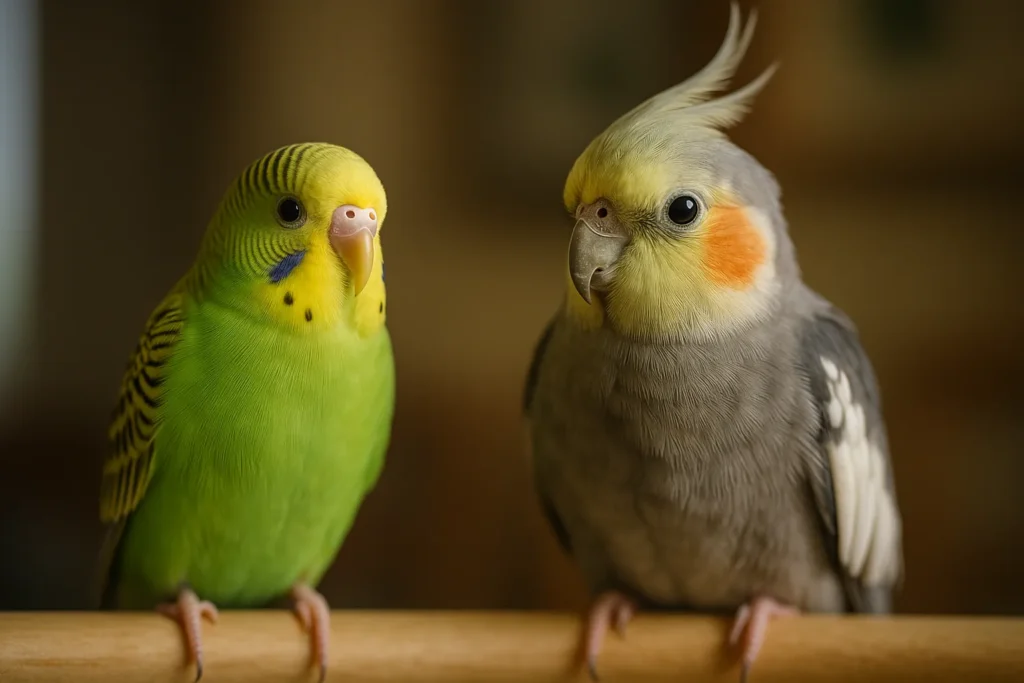
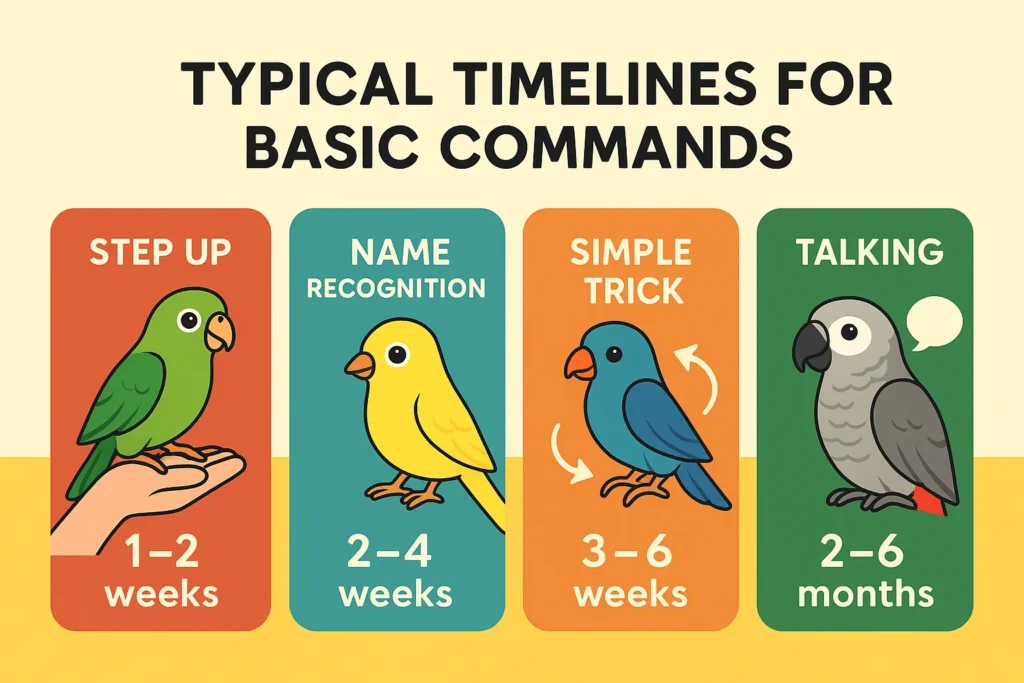
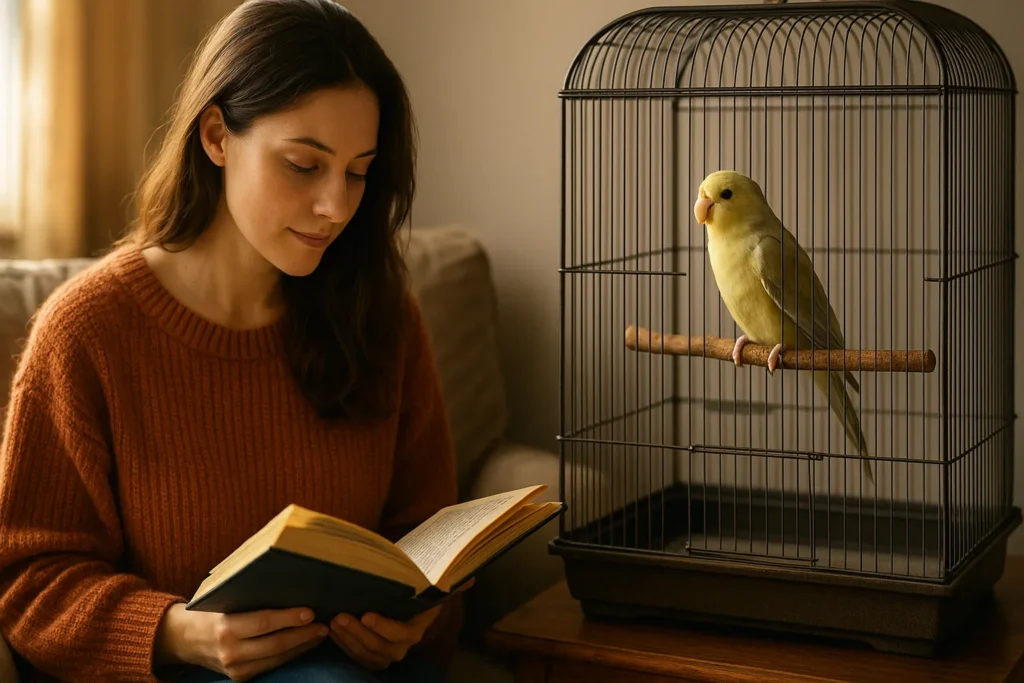
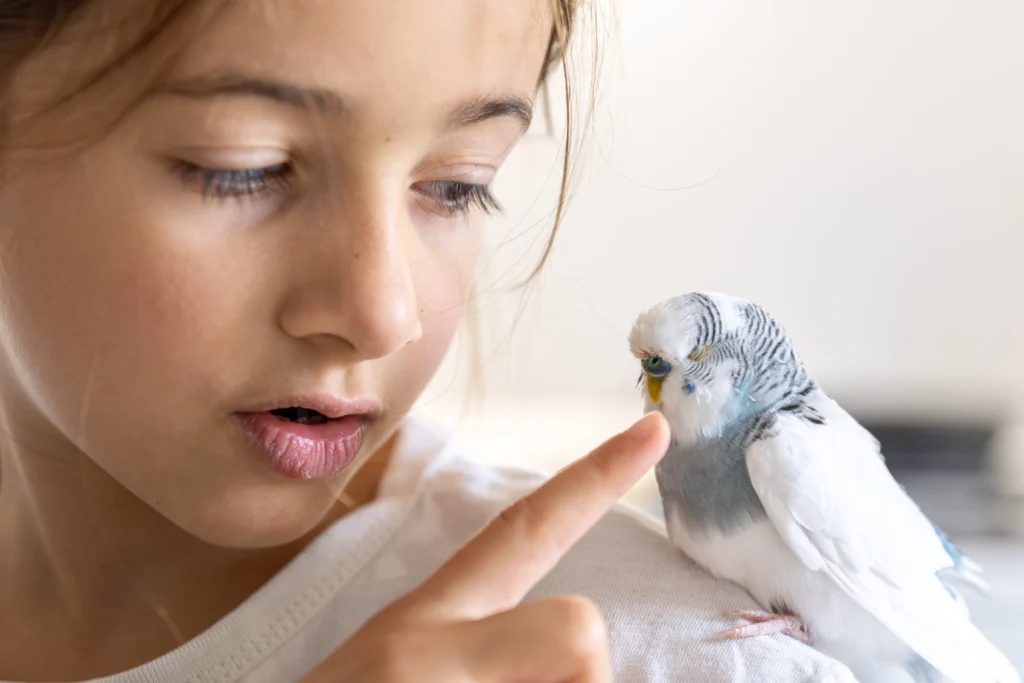
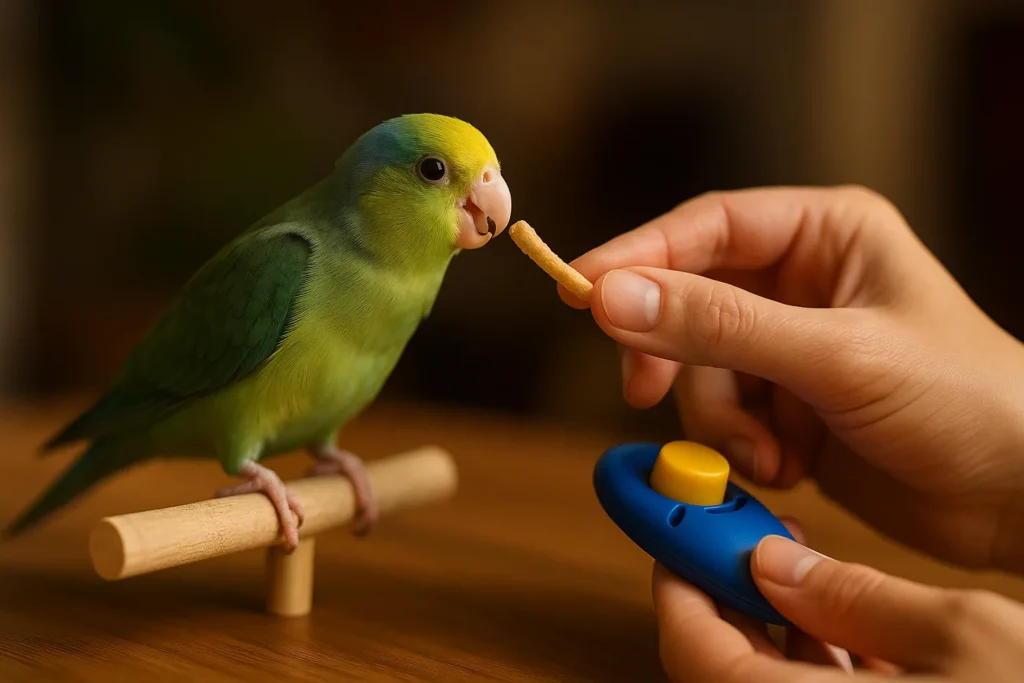
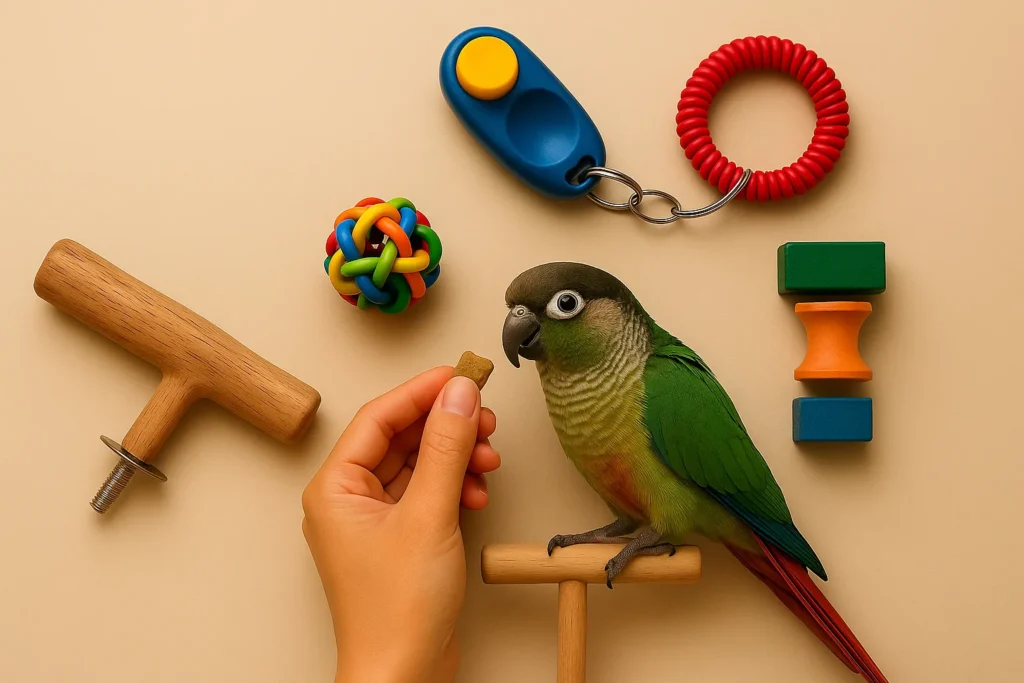

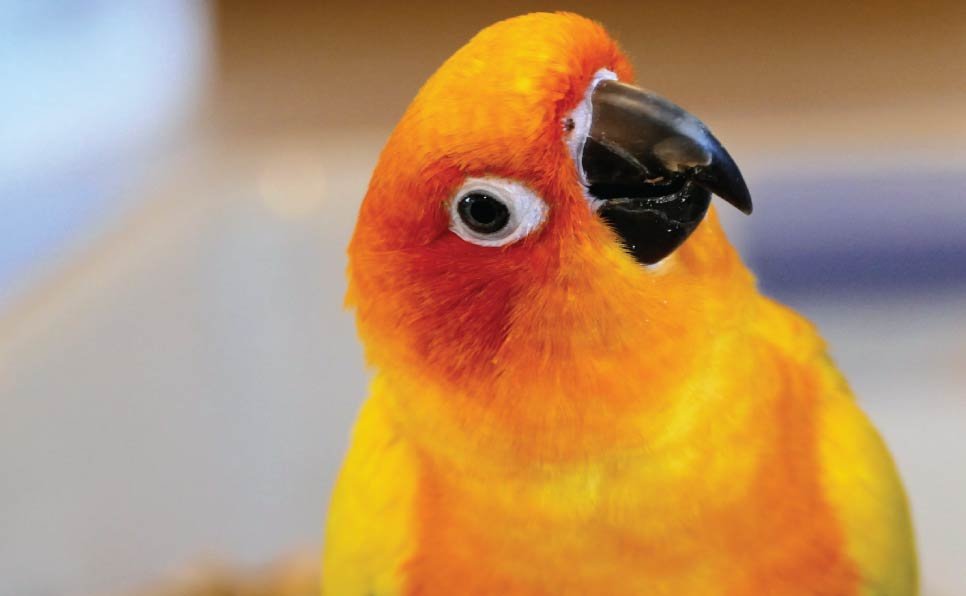


This was such an enjoyable read! It’s fascinating how small, consistent actions can build such a strong bond with birds. The idea of ending training sessions on a positive note is brilliant and seems to create excitement for the next one. I also love how the author emphasizes understanding the bird’s natural rhythms for effective training. How do you determine the best time of day to train your bird for optimal results?